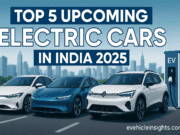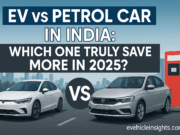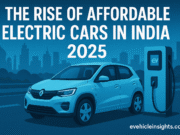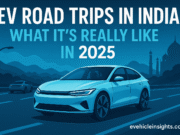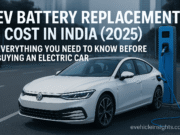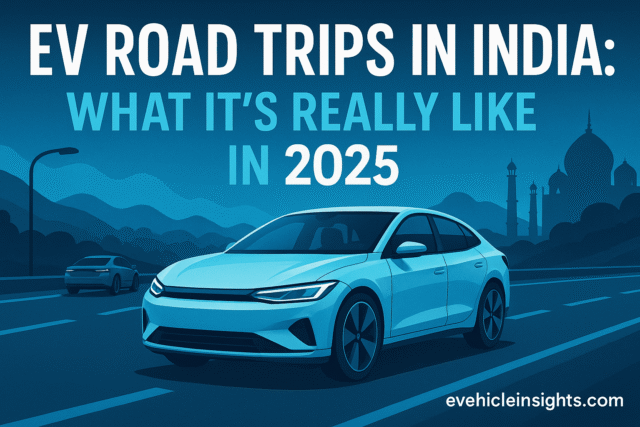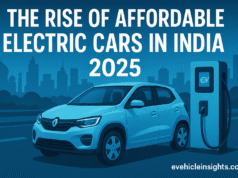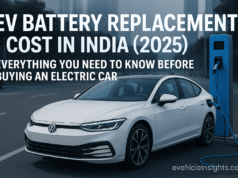TL;DR
- Long-distance EV travel in India is more viable than ever in 2025 — but still requires planning.
- Charging networks have expanded on key highways, though regional gaps remain.
- We took a real-life EV road trip from Delhi to Manali to test infrastructure, reliability, and practicality.
- Final verdict? It’s doable, even fun — if you know what you’re getting into.
The Big Question: Can You Really Take an EV Road Trip in India?
Let’s be honest — five years ago, suggesting an EV road trip in India was like asking someone to hike the Himalayas in flip-flops. Charging stations were rare, EV models were limited, and range anxiety was a daily affair. But 2025 tells a very different story.
Highways like the Delhi-Chandigarh corridor, the Mumbai–Pune expressway, and even parts of the Golden Quadrilateral are now dotted with fast chargers. EV manufacturers like Tata, MG, and Hyundai have launched long-range models. Apps like ChargeGrid and Statiq show real-time availability. So, when we decided to test it out for ourselves with a Delhi to Manali trip in a Tata Nexon EV Max, we were cautiously optimistic.
Planning the Route: Charging First, Scenery Second
In a petrol car, you think: “Which route is scenic?”
In an EV, you think: “Which route has chargers?”
We plotted the 540 km trip with charging stops in Murthal, Ambala, and Mandi. On paper, it looked doable — three fast-charging stops in roughly 10-hour intervals. But road trips aren’t lived on paper.
Pro Tip:
Always download offline maps. Signal drops in the hills are EV-unfriendly.
The Journey: Highlights, Hiccups, and Honest Truths
- Day 1: Delhi to Ambala (200 km)
Murthal dhabas now offer fast charging, which is surreal — eating a paratha while topping up your battery. The Tata Power charger worked flawlessly. - Day 2: Ambala to Mandi (240 km)
This leg was trickier. A charger in Bilaspur was down, and we had to detour 20 km to find a functioning Statiq point. Not fun with 14% battery. Lesson: Always keep a buffer. - Day 3: Mandi to Manali (100 km)
The climb drained the battery faster than expected. Regenerative braking helped on the way down, but the cold weather in Manali dropped range by ~10%.
Still, we made it. Three days, 540 km, and zero petrol stations.
What’s Working in 2025
- Better EVs: Most mid-range EVs now offer 300–450 km on a full charge.
- Growing Network: More chargers, especially near tourist hotspots and highways.
- Smart Apps: Real-time updates reduce anxiety (when they’re accurate).
What’s Still a Pain
- Broken or Busy Chargers: No guarantee that a listed charger is actually functional.
- Payment & App Chaos: Different chargers need different apps. Some only accept UPI. Some don’t work at all.
- Range Fluctuation: Elevation, AC usage, and traffic can drastically change your consumption.
What You Need to Carry
- Portable Type 2 charger
- Multiple charging apps (Tata, Statiq, ChargeZone, etc.)
- Extension cable (trust us)
- Patience — and good music
Final Verdict: Worth It… With Eyes Open
Yes, you can road trip in an EV in India in 2025. You just can’t wing it.
If you’re the type who enjoys spreadsheets before suitcases, you’ll love it. The drive is smoother, quieter, and surprisingly satisfying when done right. But spontaneity? Not yet.
Personal Take from EVehicleInsights
What blew us away most was not the infrastructure — it was the vibe. Curious stares, people asking “Yeh petrol nahin hai?”, and seeing EVs silently climb mountain roads. It feels like the future is here… just wrapped in jugaad.
So if you’re planning a road trip with your EV this year, do it. Just pack your charger — and your common sense.
Over to You
Have you taken an EV road trip in India? Planning one soon? Share your experience — the good, the bad, and the battery bars.

